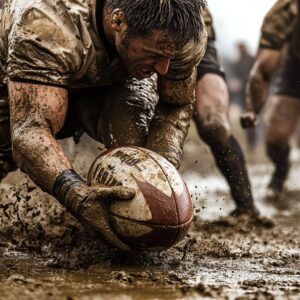Whether you’re an athlete, a personal trainer, or a fitness brand, a workout photoshoot can showcase your hard work, tell your story, and grab the attention of potential clients or sponsors. But how do you make those action shots pop? Here’s everything you need to know to smash your next fitness shoot.
1. Set the Scene
Location is everything. Gym walls and sweat stains might scream authenticity, but they’re not always visually appealing. Scout for a space that suits your vibe. A bright studio with natural light, an outdoor track, or even an industrial warehouse can add depth and drama to your shots. If you’re shooting in a gym, tidy up! No one wants a stray kettlebell photo-bombing their best pose.
2. Wear the Right Gear
Your outfit sets the tone. Stick to sleek, well-fitted activewear that complements your body and movement. Bold colours and patterns can create visual interest, while monochrome looks are timeless and classy. Whatever you choose, avoid logos that might distract from the focus — which is you.
Pro tip: Pack spare outfits to mix it up, especially if you’re showcasing a fitness brand.
3. Plan Your Shots
Think about what story you want to tell. Are you showing strength? Endurance? Technique? Discuss a shot list with your photographer before you start. A mix of candid, posed, and action shots works wonders:
- Candid shots: Think tying your shoelaces or wiping sweat from your brow.
- Action shots: Deadlifts, sprints, or that perfect jump mid-air.
- Hero poses: Flexing, smiling, or that calm “just smashed my PB” look.
4. Perfect Your Timing
Action shots are all about timing. Movements like jumping, lifting, or sprinting need to be perfectly synced with the camera. It’s a team effort between you and your photographer. Practise the movement a few times to find the sweet spot where your form and the framing align.
5. Focus on Lighting
Lighting makes or breaks a fitness shoot. Natural light works wonders for outdoor shoots, especially during golden hour (early morning or late afternoon). For indoor shoots, strong overhead lights can accentuate muscles, while side lighting adds depth and shadow for that dramatic effect. Speak to your photographer about how lighting can work to highlight your best angles.
6. Stay True to Yourself
Authenticity wins. Don’t force poses or movements that feel unnatural or outside your expertise. If you’re a runner, let’s see you in motion. If weightlifting is your thing, showcase the grind and the glory. The goal is to reflect your unique fitness journey.
7. Don’t Skip the Details
Sometimes the smallest details make the biggest impact. A close-up of your hands gripping the barbell, sweat dripping down your face, or chalk-dusted palms all tell a powerful story. These shots add texture and emotion to your gallery.
8. Hydrate and Prep Like an Athlete
Your body is your main prop, so treat it well. Hydrate, eat a balanced meal beforehand, and stretch to avoid stiffness during dynamic movements. Bring a towel, water bottle, and any equipment you might need — the more prepared you are, the smoother the shoot will be.
9. Relax and Have Fun
Photoshoots can feel a bit staged, but the best shots come when you’re relaxed and in the zone. Chat with your photographer, play your favourite tunes, and let your personality shine through. Remember: confidence looks great on camera.
10. Hire the Right Photographer
Finally, working with someone who understands sports photography is key. They’ll know how to capture movement, highlight your best angles, and bring your vision to life. Look for someone with a strong portfolio of fitness or action shots — and don’t be afraid to share your ideas.
A workout photoshoot isn’t just about looking good; it’s about telling your story and showcasing your passion for fitness. With the right planning and preparation, you’ll walk away with photos that motivate, inspire, and leave a lasting impression. Now go flex your way to some killer shots!










